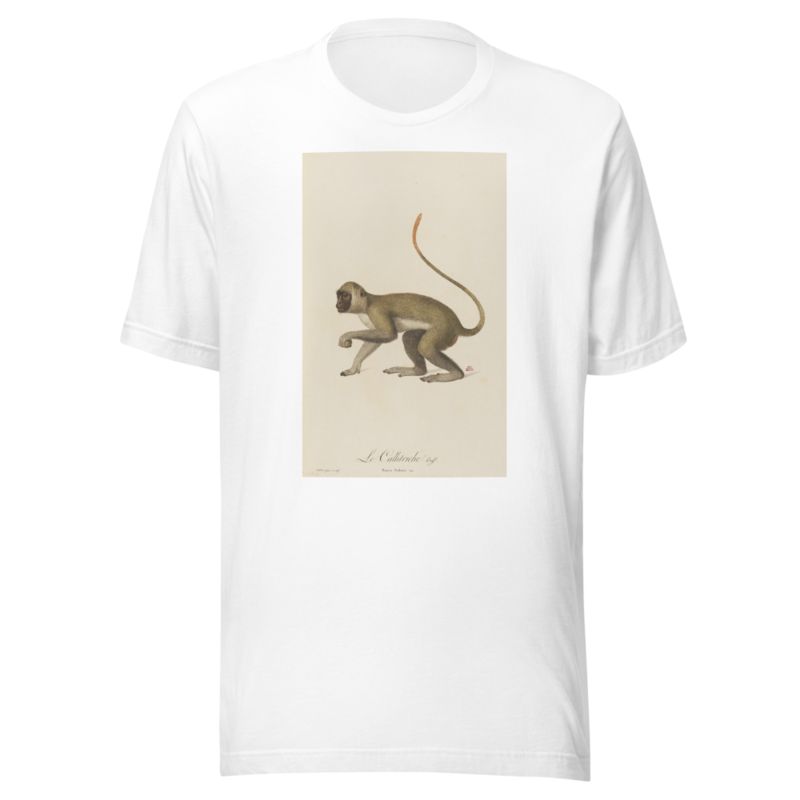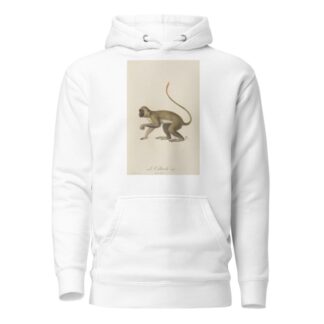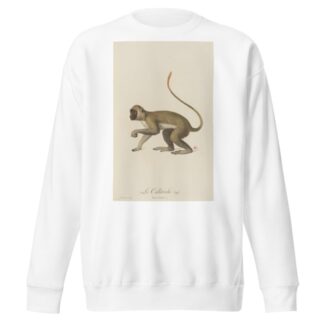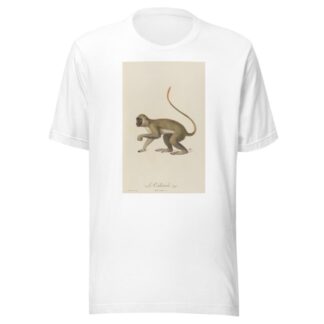Description
Le Callitriche by Jean-Baptiste Audebert printed on a T-Shirt
About the T-Shirt
Regular fit
Standard length, the fabric easily gives into movement
Casual wear
A classic, everyday option loved by our customers
Side-seamed
Constructed by sewing two parts together, creating a fitted look
The Unisex Staple T-Shirt feels soft and light with just the right amount of stretch. It’s comfortable and flattering for all. We can’t compliment this shirt enough–it’s one of our crowd favorites, and it’s sure to be your next favorite too!
- Solid colors are 100% Airlume combed and ring-spun cotton
- Ash color is 99% combed and ring-spun cotton, 1% polyester
- Heather colors are 52% combed and ring-spun cotton, 48% polyester
- Athletic and Black Heather are 90% combed and ring-spun cotton, 10% polyester
- Heather Prism colors are 99% combed and ring-spun cotton, 1% polyester
- Fabric weight: 4.2 oz./yd.² (142 g/m²)
- Pre-shrunk fabric
- 30 singles
- Side-seamed construction
- Tear-away label
- Shoulder-to-shoulder taping
- Blank product sourced from Nicaragua, Mexico, Honduras, or the US
Jean-Baptiste Audebert (1759-1800)
Jean Baptiste Audebert was a French artist and naturalist.
Audebert was born at Rochefort. He studied painting and drawing at Paris, and gained reputation as a miniature-painter. Employed in preparing plates for the Histoire des cloportes of Guillaume-Antoine Olivier, he acquired a taste for natural history. His first original work, Histoire naturelle des singes appeared in 1800, illustrated by sixty-two folio plates, drawn and engraved by himself. The coloring in these plates was unusually beautiful, and was applied by a method devised by himself.
His work was also included in the bestselling Relation du Voyage à la Recherche de la Pérouse.
Audebert died in Paris, leaving complete materials for another work, Histoire des colibris, oiseaux-mouches, jacamars et promerops, which was published in 1802. Two hundred copies were printed in folio, one hundred in large quarto, and fifteen were printed with the whole text in letters of gold. Another work, left unfinished, was also published after the author’s death, L’Histoire des grimpereaux et des oiseaux de paradis. The last two works also appeared together in two volumes, Oiseaux dorés, ou à reflets métalliques (1801-1802), written with his friend Louis Jean Pierre Vieillot. In this work he printed lines of gold and silver over the painted colours of the birds to give them a metallic sheen imitating the iridescent colours of nature.






Reviews
There are no reviews yet.